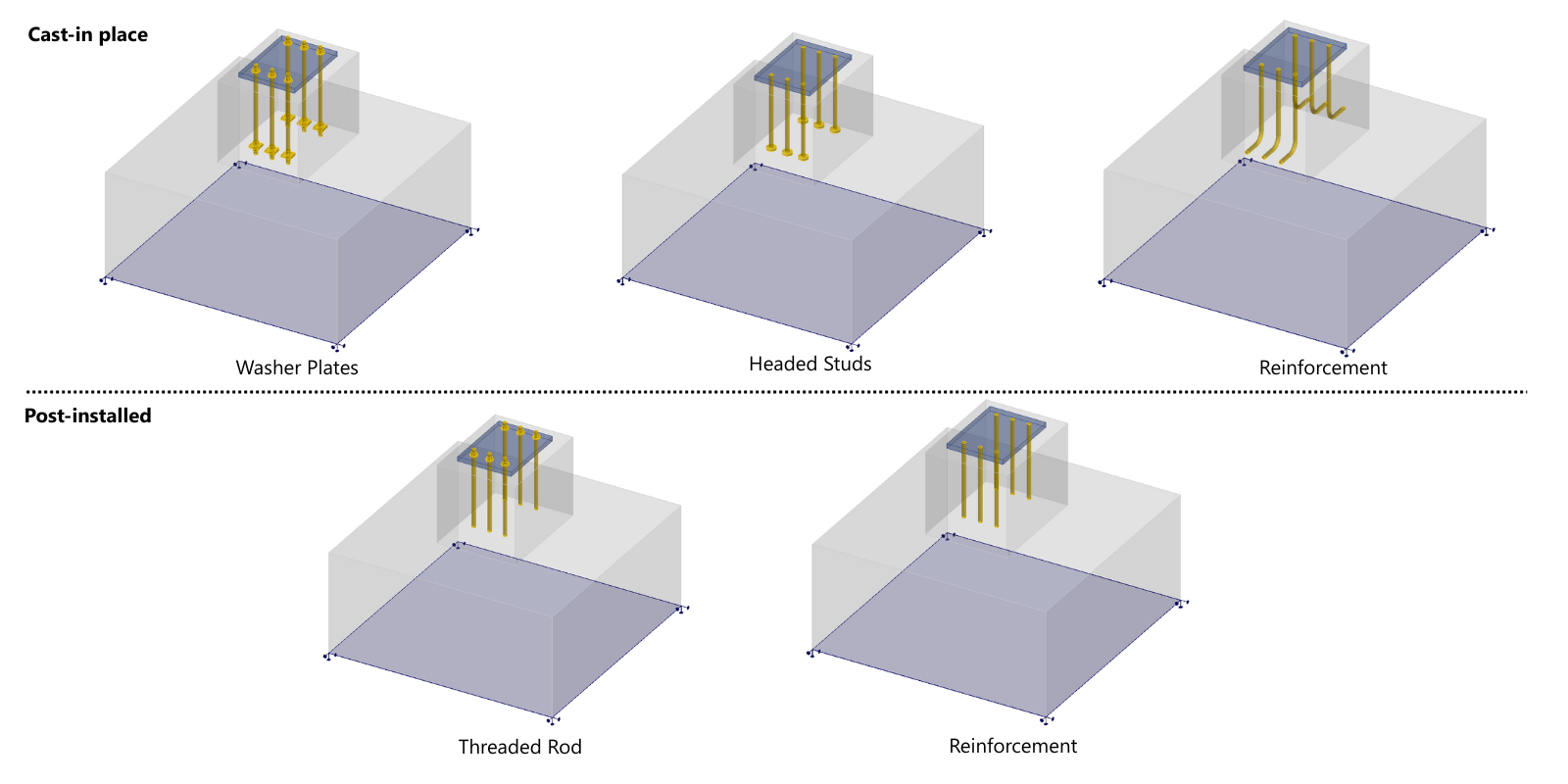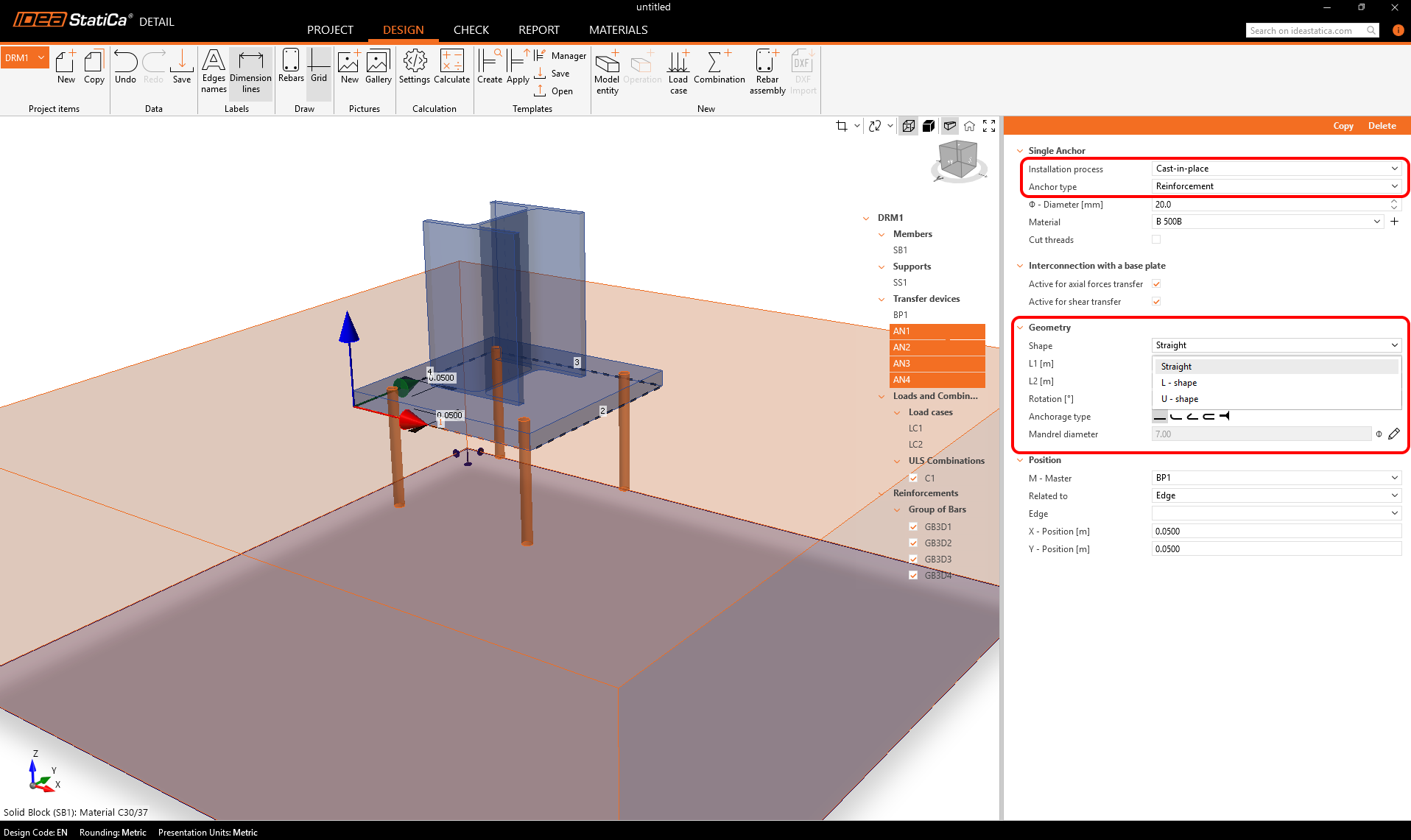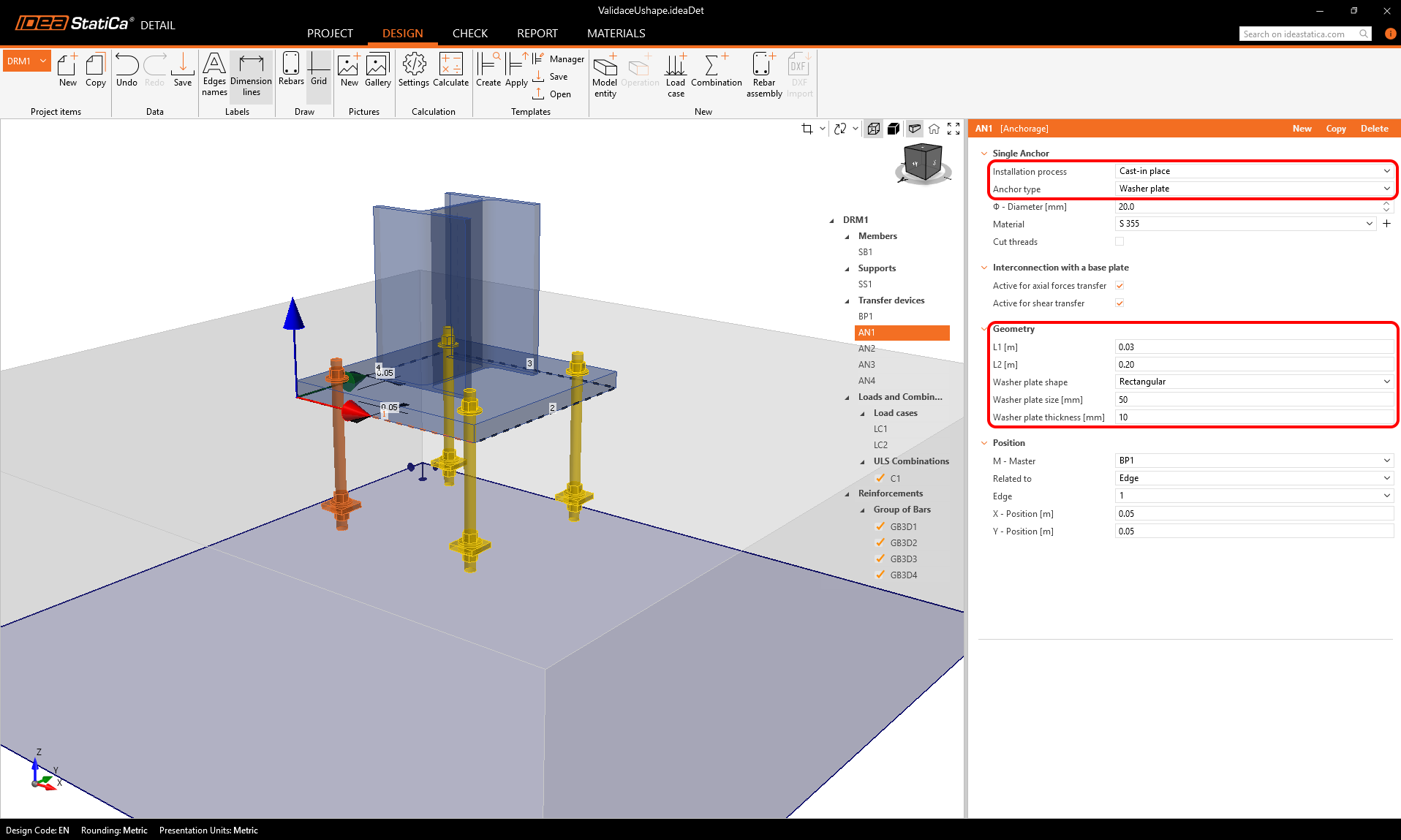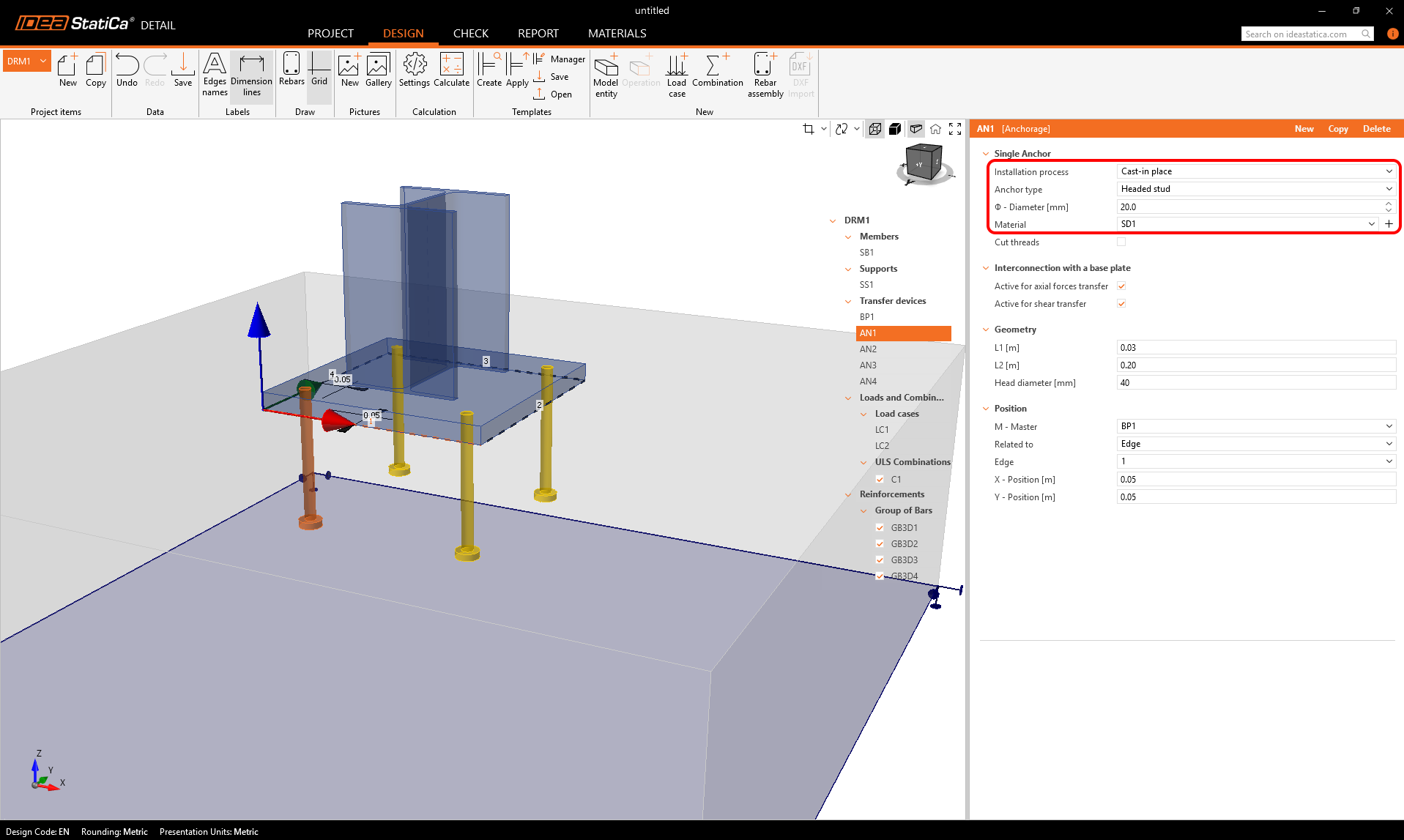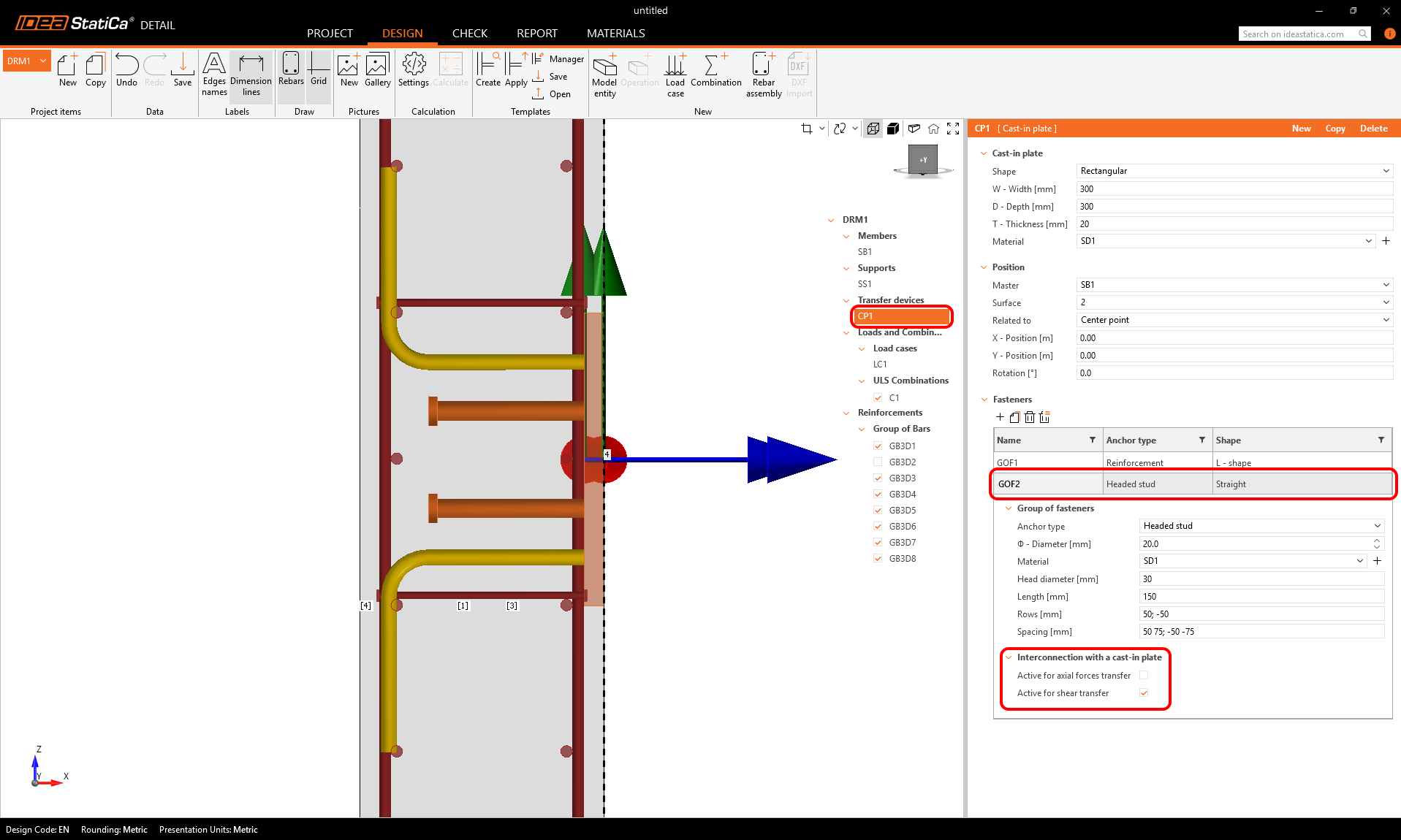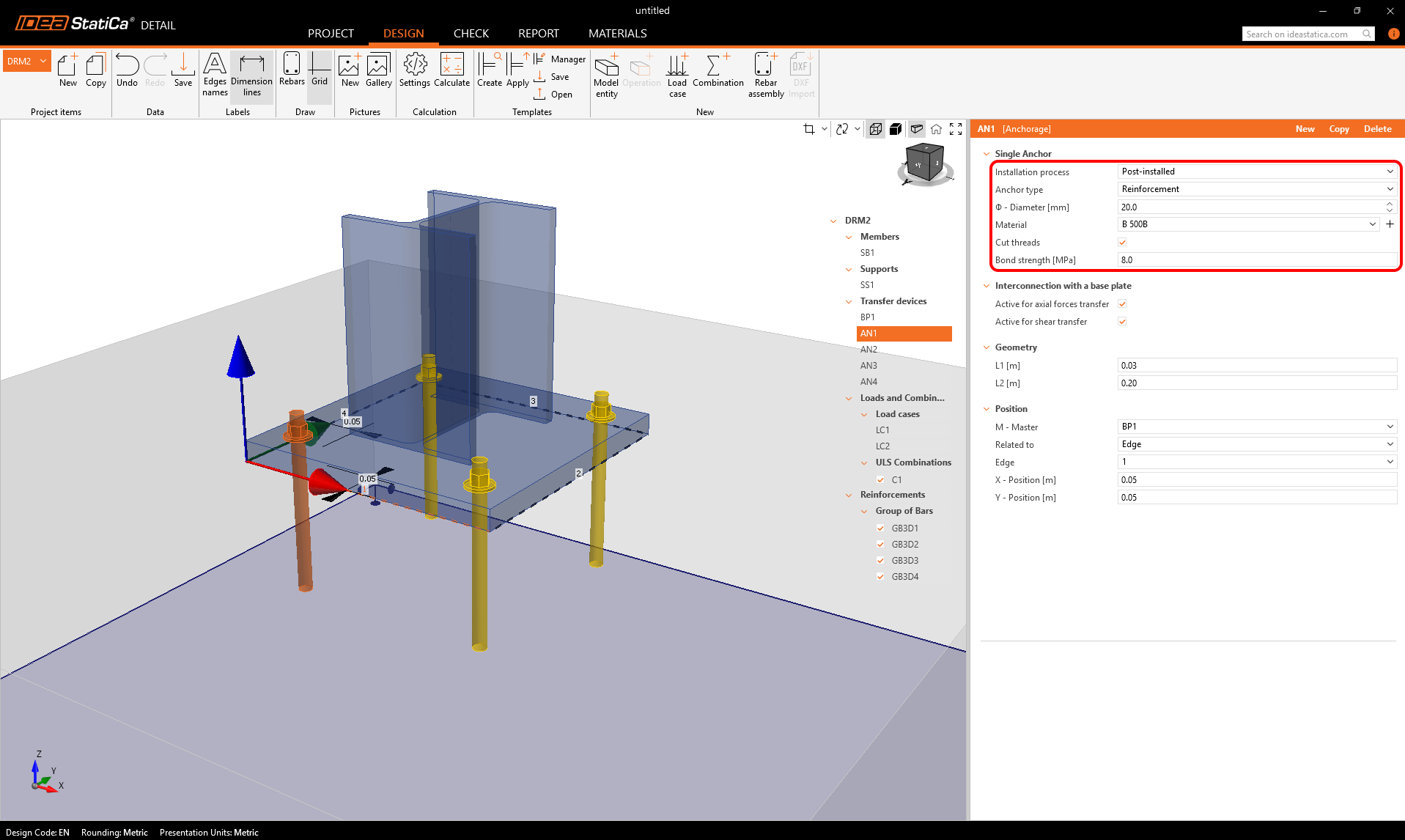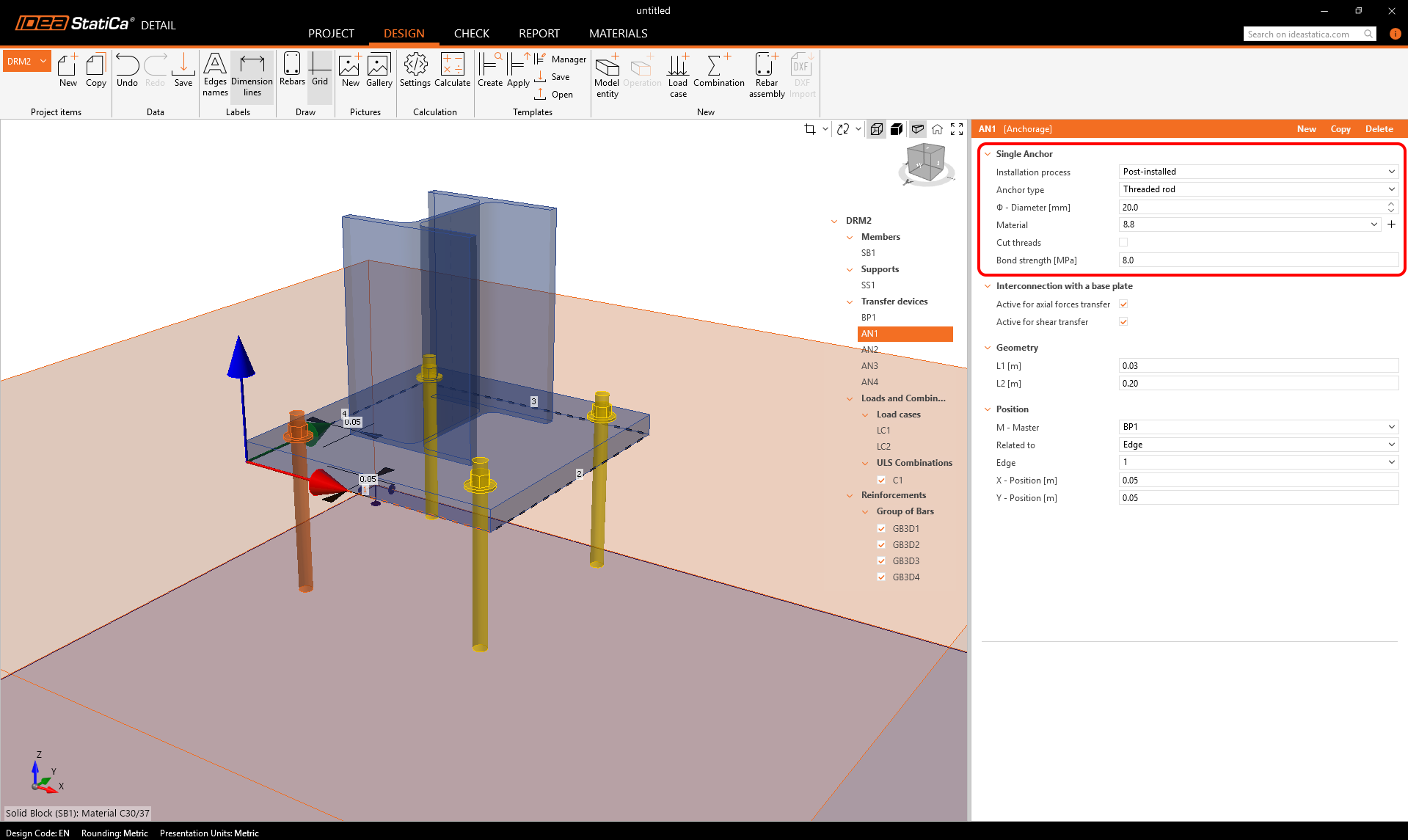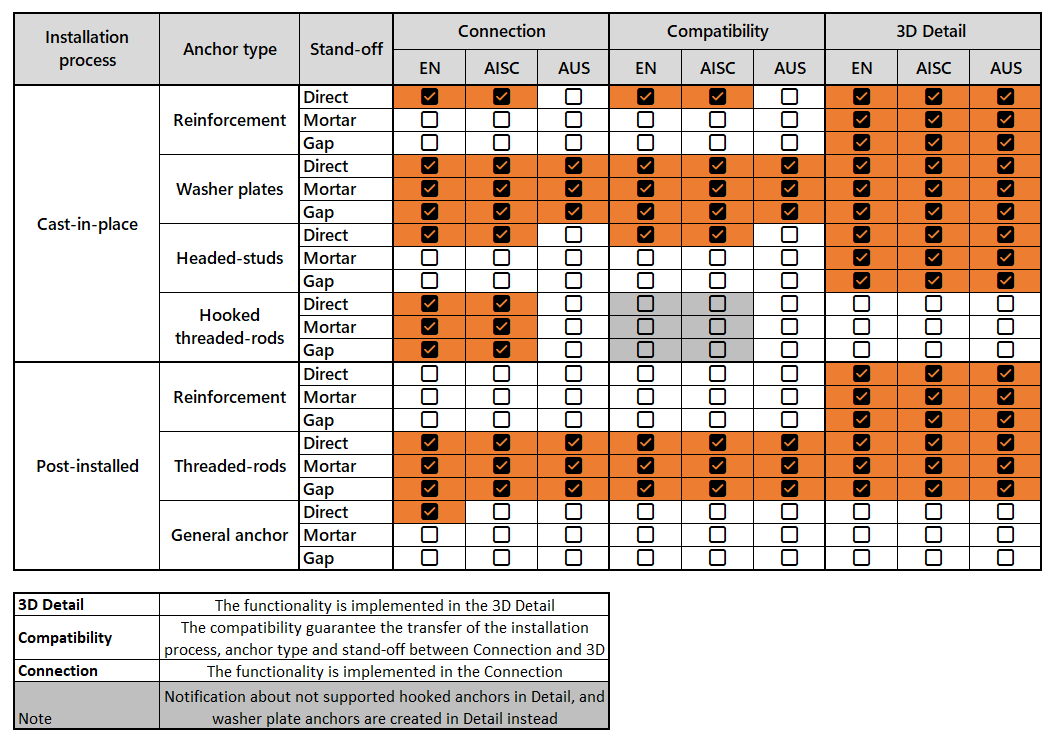Single anchor definition
The following article provides a complete overview of all anchoring cases that can be defined in IDEA StatiCa Detail.
Cast-in-place
- Reinforcement (from version 25.0)
- Washer plate (from version 25.1)
- Headed stud (from version 25.1)
Post-installed (adhesive) anchors
- Reinforcement (from version 25.0)
- Threaded rod (from version 25.1)
Cast-in-place
1. Reinforcement
Fasteners can be defined directly for each specific plate. Users may add an unlimited number of fasteners and even combine different types within a single plate. These are modeled as ribbed reinforcement embedded in concrete, with bond strength calculated according to code provisions in the same way as for standard reinforcement. At the anchor end, an anchorage type can be specified, functioning identically to reinforcement anchorage. In this case, an anchorage spring is applied, with the β-factor determined by the selected code.
- Straight: Anchors can be arranged in rows and positions following a predefined key (similar to bolt placement in Connections). Material, length, and diameter, as well as specify an anchorage type can be defined.
- L-shape: The end configuration is defined as L-shaped with an editable hook length.
- U-shape: A continuous series of reinforcements forming a U-shape, connected on both sides.
2. Washer plate
The washer plate is modeled as a plate-shell element directly attached to the anchor shank, transferring load to the concrete exclusively through compression contact. It can be defined in either a circular or square shape, with fully customizable dimensions. The plate itself is modeled linearly, without plasticity, and is not subjected to resistance checks. Since the shank has zero bond strength, the entire load is transferred to the concrete through the washer plate.
3. Headed stud
This element mechanically behaves like a washer plate, but is assigned corresponding material grades available in the MPRL. Headed studs can also be arranged in groups within the Cast-in place entity.
A new control option allows defining which anchor group transfers specific load types, for example, assigning shear to studs while reinforcement carries tension and compression.
In addition, a stop criterion has been introduced to verify pull-out capacity in accordance with code requirements. Limit values for head-to-concrete or washer plate-to-concrete contact are calculated per the relevant standards and presented in a dedicated table, including the normative reference and the governing formula for the limit force.
Post-installed anchors
1. Reinforcement
These anchors are designed as bars installed into drilled holes and bonded to the surrounding concrete using adhesive. The design bond strength is specified directly by the engineer based on the technical documentation of the chosen adhesive product.
2. Threaded rod
It works in the same way as post-installed reinforcement, but with the advantage that the MPRL offers predefined standard material grades specifically for threaded rods.
Integration with IDEA StatiCa Connection and codes
These options are also consistent with IDEA StatiCa Connection. How this is aligned to different standards can be seen in the following table.
More about the anchoring plates (base plate, cast-in plate) options can be found in a separate article.
Released in IDEA StatiCa version 25.0, updated in version 25.1.



